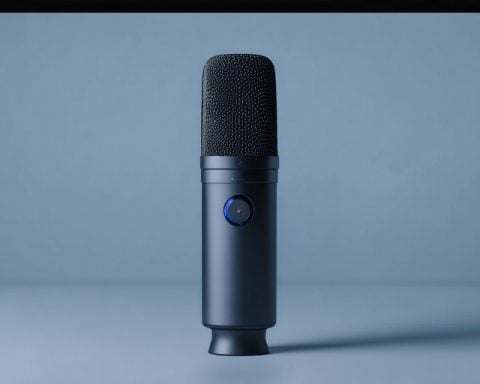- Mercedes-Benz partners with Factorial Energy to develop solid-state batteries, significantly boosting electric vehicle range and sustainability.
- The collaboration aims for a 25% range increase over traditional lithium-ion batteries, promising over 620 miles on a single charge.
- The advanced Solstice battery could achieve an energy density of 450 Wh/kg, potentially extending vehicle range by up to 80%.
- Key milestones include June’s B samples showcasing 106 Ah charging capacity and 391 Wh/kg density, pointing to rapid technological advancements.
- Innovations in dry cathode coating and charging capabilities are critical to further developments.
- This venture highlights the transformative potential of solid-state technology in electric mobility.
Imagine a future where electric vehicles glide effortlessly for over 620 miles, seamlessly marrying sustainability and convenience. This vision races toward reality, led by Mercedes-Benz’s groundbreaking collaboration with Factorial Energy. Their ambitious alliance endeavors to introduce a solid-state battery with the power to catapult electric mobility into uncharted distances before the decade crescendos to a close.
Mercedes-Benz, alongside industry titans Stellantis and Hyundai-Kia, channels innovation through Factorial’s expertise in solid-state battery technology. The resulting promise? A formidable 25% range boost over lithium-ion counterparts while maintaining size and weight parity. In a daring dance of design, Mercedes meticulously tweaks the EQS’s architecture, crafting a refined nest for this burgeoning energy titan.
The efforts culminate in the advanced Solstice battery, synonymous with aspiration and breakthrough. September whispers of its potential, boasting an unverified energy density reaching a staggering 450 Wh/kg. Such prowess hints at extending an electric car’s reach by up to 80%, a notion that could revolutionize the landscape of personal travel.
The journey to these dizzying heights progresses in stages. June’s B samples mark a pivotal milestone, presenting an impressive 106 Ah charging capacity backed by 391 Wh/kg density. Eyes now pivot to future iterations, propelled by dry cathode coating innovations and burgeoning charging prowess.
Mercedes and Factorial’s pioneering venture stands as a beacon of hope for eco-conscious drivers worldwide. It underscores a singular truth: the road to tomorrow is paved with electrifying possibilities. As the world watches, these technological strides promise to transform mere dreams of an electric future into tangible, drivable realities.
Unlocking the Future: How Solid-State Batteries Will Transform Electric Vehicles
How-To Steps & Life Hacks
Maximizing Electric Vehicle Range with Solid-State Batteries:
1. Optimize Charging Habits: Charge during off-peak hours to benefit from cheaper electricity rates and ensure your vehicle’s battery is topped up for maximum range.
2. Regular Maintenance: Keep up with software updates and regular maintenance to ensure optimal battery performance and lifespan.
3. Drive Efficiently: Incorporate driving techniques like smooth acceleration and deceleration to optimize energy consumption.
Real-World Use Cases
Potential Impact on Various Sectors:
– Public Transportation: Electric buses and trains using solid-state batteries can revolutionize urban mobility by providing longer operational hours with reduced charging time.
– Commercial Fleets: Delivery services and logistics companies can improve operational efficiency and reduce costs with extended range and lower fuel expenses.
– Rural Mobility: Remote areas with limited charging infrastructure will benefit from the extended range provided by these batteries, enhancing connectivity.
Market Forecasts & Industry Trends
Solid-State Battery Market Outlook:
– Solid-state batteries are expected to capture over $5 billion in market value by 2030 due to demand for efficient and sustainable energy solutions.
– The trend towards electrification continues to accelerate, with governments around the globe incentivizing electric vehicle adoption.
Reviews & Comparisons
Solid-State vs. Lithium-Ion Batteries:
– Battery Life: Solid-state batteries offer longer lifespan due to reduced degradation rates compared to lithium-ion batteries.
– Safety: Solid-state variants are less prone to overheating and fire risks, providing safer alternatives for electric vehicles.
– Performance: While solid-state batteries are still under development, they’re projected to surpass lithium-ion batteries in energy density and charge speeds.
Controversies & Limitations
Challenges Facing Solid-State Batteries:
– Production Costs: Currently, the manufacture of solid-state batteries is costlier than lithium-ion, presenting a significant barrier to mass production.
– Material Availability: The rare materials required for production, like lithium and cobalt, present supply chain concerns.
Features, Specs & Pricing
– Energy Density: Up to 450 Wh/kg with future iterations aiming higher.
– Charge Capacity: Current samples showcase 106 Ah.
– Price Predictions: While initially high, prices are expected to drop as technology matures and scales up.
Security & Sustainability
Environmental and Safety Impact:
– Solid-state batteries minimize environmental harm due to reduced chemical leakage risks.
– Their design promotes longer-lasting batteries, which means fewer replacements and less waste.
Insights & Predictions
Future Developments in EV Technology:
– Partnerships and technological innovations will likely accelerate bringing solid-state batteries to mainstream use by the mid-to-late 2020s.
– Potential advancements could include faster charging capabilities and integration with renewable energy sources.
Tutorials & Compatibility
Adopting Solid-State Batteries in Existing Vehicles:
– To accommodate solid-state batteries, existing EV architectures may require design modifications, which automakers like Mercedes are already exploring and testing.
Pros & Cons Overview
Pros:
– Increased vehicle range
– Enhanced safety features
– Potential environmental benefits
Cons:
– High initial development costs
– Current challenges with mass production scalability
Actionable Recommendations
1. Stay Informed: Regularly check for updates from automakers and tech firms investing in solid-state technology.
2. Consider Infrastructure: Evaluate the availability of charging infrastructure for your location to maximize the benefits of enhanced battery range.
3. Plan Purchases Smartly: Watch market trends and consider long-term benefits when purchasing an EV with next-gen battery tech.
For more information on advances in electric vehicles and sustainable automotive technologies, visit the reliable industry leader, Mercedes-Benz.














